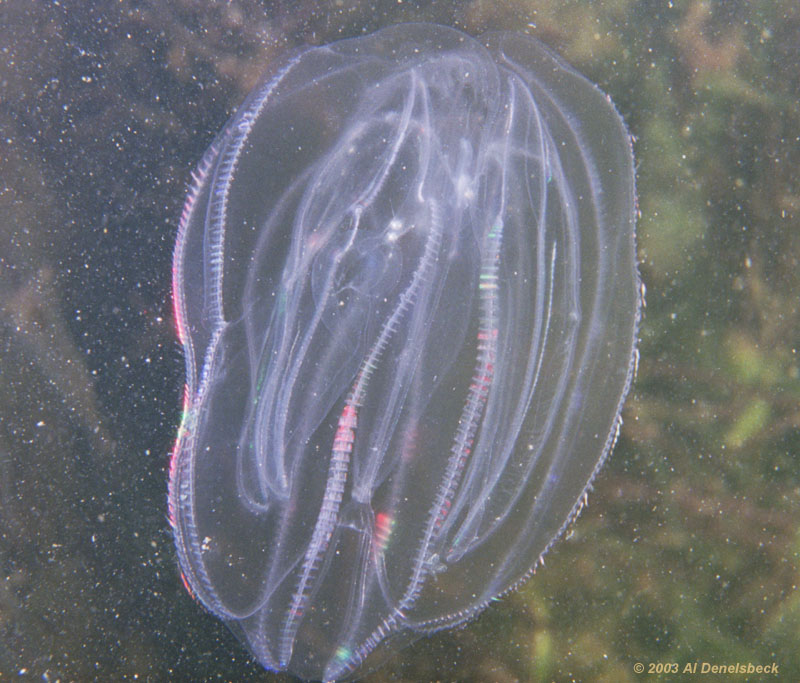Canon Elan IIe, tripod
380EX flash off-camera for sidelighting
Sigma 28-105 w/ 36mm extension tube
Fuji Superia 400
1/125 second at f22
|
Canon Elan IIe, tripod |
| What is it? | |
 |
|
Pretty wild-looking, isn't it?
I caught several examples of this species of invertebrate in the nearby sound – they're apparently quite prolific. And they also appear to be harmless to humans, for which I'm thankful. They're so transparent as to be virtually invisible even from very short distances, and on several occasions I discovered one when it was only centimeters from my dive mask. And abruptly, I would realize that I was in the water with quite a few of them, smack in the middle of the smack, as it were ('smack' is the term for a collection of jellyfish, like 'herd' or 'pride' or 'gaggle' – didn't know that, did you?). Contact was impossible to avoid, but after several such accidents, I began ignoring them to no ill effect.
According to what I can find, this is a variety of comb jellies (phylum Ctenophora, not actually jellyfish and quite far removed from them) about the size of a golf ball. I'm not even going to attempt to describe the actual body shape, but the lines along the body are rows of tiny cillia for maneuvering. The motion of the cillia is so rapid, in contrast with the painfully slow movement of the jelly through the water, that you almost expect to hear the sounds of a blimp. Moreover, the cillia refract the light in the right conditions, producing rainbow ripples that run down the body, an effect I was lucky enough to capture with this photo – it took enough attempts, believe me.
Official accounts have called this species bioluminescent, but this isn't something I've witnessed for myself. The rainbow colors only appear in bright light, and vanish as soon as the light is extinguished. I observed one specimen in a pitch dark room for several minutes and witnessed nothing, except for the bioluminescent plankton that shared the tank at the time.
I couldn't keep any of these in my tank, since the circulator overpowered their weak ability to swim and they would quickly end up pinned against the intake, which will injure them after a while. This shot was taken aiming straight down into the tank when the jelly was right at the surface, with the strobe aimed directly from the side below the waterline. The 28-105 zoom allowed me the right working distance and framing, and an aperture of f22 provided some leeway in tight focusing, difficult to do with a handheld camera at macro distances.
